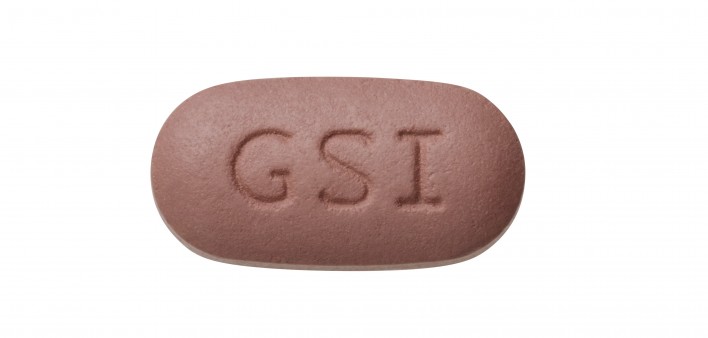Switching HIV regimens from ViiV Healthcare’s Triumeq (dolutegravir/abacavir/lamivudine) to Gilead’s newly approved Biktarvy (bictegravir/emtricitabine/tenofovir alafenamide) is safe and associated with comparably effective results.
Jean-Michel Molina, MD, of the Hôpital Saint-Louis, in Paris, presented 48-week findings from a Phase III study of people with HIV who were all initially taking Triumeq (dolutegravir/abacavir/lamivudine) at the 2018 Conference on Retroviruses and Opportunistic Infections (CROI) in Boston.

Jean-Michel Molina speaks at CROI 2018 in Boston.Benjamin Ryan
Participants may also have entered the study taking Triumeq’s (dolutegravir/abacavir/lamivudine) components as Tivicay (dolutegravir) plus Epzicom (abacavir/lamivudine). All began the study with a fully suppressed viral load and an estimated glomerular filtration rate (eGFR) of at least 50 (indicating moderate or less severe chronic kidney disease).
A total of 563 participants were randomized evenly to receive Biktarvy (282 participants) or to remain on Triumeq (281 participants).
Eleven percent of the participants were women and 22 percent were Black. The median age was 46, with a range of 20 to 71 years old. The median eGFR was 101, indicating good kidney function.
At the week 48 mark, 1.1 percent of those who switched to Biktarvy and 0.4 percent of those who stayed on Triumeq had a viral load of 50 or above. This difference was within the 4-percentage-point spread preestablished as the criterion to determine whether switching to Biktarvy was noninferior, or as effective as, staying on Triumeq. Additionally, a respective 93.6 percent and 95 percent of the two groups had a viral load below 50 at this point.
None of the participants developed resistance to any of the study drugs included in the respective regimens.
Two participants died in the Biktarvy arm, but their deaths were not considered related to HIV treatment.
There were no significant differences in adverse health event rates between the two study arms. The most common adverse health events were upper respiratory tract infection (10 percent in the Biktarvy group and 10 percent in the Triumeq group experienced this), diarrhea (9 percent versus 5 percent), inflammation of the upper nasal passages (7 percent versus 8 percent) and headache (7 percent versus 7 percent). A respective six (2 percent) and two (1 percent) of the participants in each group experienced adverse health events that led them to stop their regimen before the end of the 48-week study period.
Participants’ average bone mineral density level increased at a similar rate in both groups. The percentage changes from the study’s outset in biomarkers indicating kidney function were also similar between the study arms, as were the results of lipid tests, with the exception of a small decrease in triglycerides among those in the Biktarvy group.
“With this regimen, whether you use [Biktarvy] or [Triumeq] there are almost no changes in lipids,” Molina said. “That is the take-home message regarding lipids in general.”
To read a press release about the study, click here.







Comments
Comments